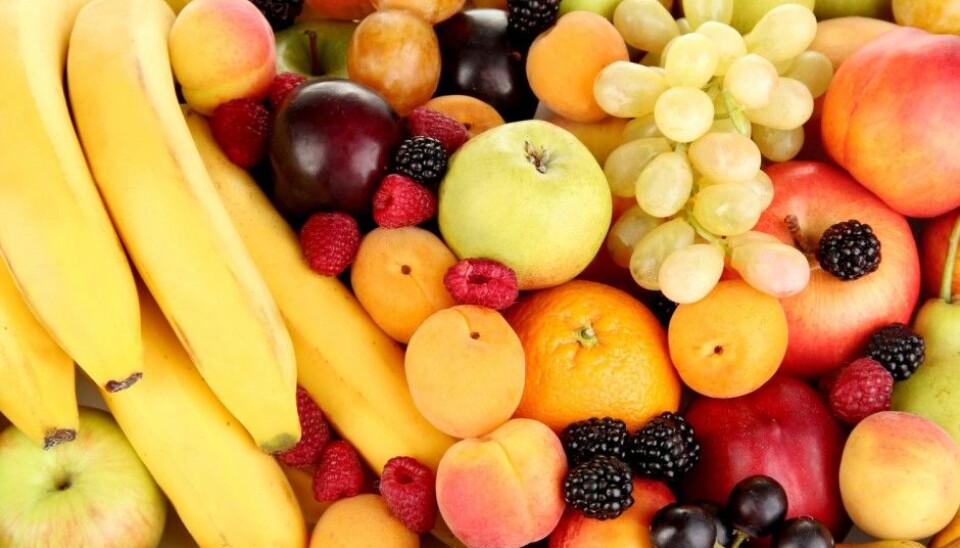
These are the fruits and vegetables we waste the most
Seven vegetables and fruits represent about half of all produce that goes to waste in supermarkets, according to a Swedish study. A focus on these can cut costs and help the environment.
Three researchers from Karlstad University in Sweden have directly measured the amount of wastage in the produce section of three supermarkets. They have also calculated the climate impact and financial costs of the wastage.
Swedes are far from alone. According to the web page matsvinn.no, Norway disposes of over 350,000 tonnes of food a year that could have been eaten – over 66 kilos per Norwegian. Consumers are behind most of the waste, as it occurs after the food gets to the home. But grocery stores throw away huge amounts too, especially bread, fresh fruit and vegetables.
Anne Marie Schrøder is chief spokeswoman at Matvett, a Norwegian non-profit organisation that tries to reduce food waste in general.
“There are three reasons for why we need to reduce food waste. It is not profitable for the grocery sector or for society. Nor is it environmentally or climate friendly. And we could feed the starving people of the world with the food wasted globally. All food has a value and a sensible utilisation of the resources is essential,” she says to ScienceNordic’s Norwegian partner forskning.no.
Seven that are worst
The researchers at Karlstad University kept tabs on the wastage in the fresh fruit and vegetables departments of three large ICA supermarkets in Sweden.
“The stores register everything they throw out. First we used this data to calculate the mass or weight of the wastage among the different fruits and vegetables. Secondly, we were given the wholesale costs for the stores and the cost of handling waste. Thirdly, we have spent time with the supermarket workers and watched their routines and thus how much time they spend working in the fresh produce departments,” says Lisa Mattsson, one of the researchers behind the study.
The researchers found out how much of each type of fruit or vegetable was discarded and calculated the climate impact this had and how much money the stores were losing on account of the wastage.
The seven products that stood for most of the waste with regard to all three factors were bananas, apples, tomatoes, lettuce, sweet peppers, pears and grapes. They represented nearly half of the total waste.
Banana is the environmental bandit
Bananas were the worst, in this context. As everybody knows, the fruit goes from yellow to overripe quite fast. Bananas were wasted more than any other product in overall weight and they also have the highest climate impact.
“We used estimates reached by other researchers to calculate the climate impact. We looked at the emissions that can be linked to various fruits all the way from production and to the product in the supermarkets,” says Mattsson.
“In defence of the banana, they also represent a big turnover. We love bananas but we do not buy them if they have any brown spots, so it is the consumers’ fault as well that so much get thrown away. Naturally, the more a retailer buys of a type of fresh produce, the more that goes to waste. This is decisive for bananas, apples and tomatoes. However, a higher proportion of sweet peppers and pears go to waste compared to their total sales.”
Sweet bell peppers and tomatoes can be used in all sorts of dishes, but they have a large climate impact when so much goes to waste. They came in third and fourth place with regard to the economic losses they represented for the supermarkets.
The waste that had the greatest economic consequences for the stores were lettuce and fresh herbs. Lettuce alone amounted to 17 percent of the costs of wasted fruit and vegetables.
The researchers suggest that a focus on these seven products can really help reduce economic losses in supermarkets.
“Fortunately, efforts to reduce waste are in the interests of the environment and the stores. I am absolutely convinced it’s feasible to turn things around,” says Mattsson.
More time sorting
A whopping 85 percent of the waste costs were attributed to the price paid by the store for fresh produce that ended in supermarket bins, rather than in shopping carts. Nine percent was linked to the labour costs of waste management – removing poor products – and six percent was associated with waste collection and disposal.
The researchers suggest that as the personnel costs were so low compared to the cost of failing to sell the produce, the supermarkets could save money by increasing labour time in the fresh produce departments. If more time were spent removing individual overripe or rotting items, less of the fruit and veggies around them would be wasted. Also, better supervision of the fresh fruit and vegetables department would help supermarkets order smarter amounts from wholesalers.
Hope to cut waste by a half
Norwegian authorities have a goal of cutting food waste by 50 percent in the next dozen years. Headway has been made, as a 12 percent cut has been achieved since 2012. One of the measures was the establishment of of the non-profit organisation Matsentralen, which provides an alternative to throwing food away. It hands out food free to charitable organisations and needy individuals. Another measure was to get more products to be marked with “best by” dates rather “use before”. More stores have started selling food at a reduced price when such shelf-life dates are drawing near.
“Fruit, vegetables and bread are the biggest problem items regarding food waste in stores. These products are not so easy to redistribute because they have to get out to people while they are fresh,” says Schrøder from Matvett.
She mentions several things that stores can do to reduce the share of wasted food.
“When fresh fruit and vegetables are sold in packages containing multiple pieces, the supermarket chain Meny for example has started removing the individual items that were bad and selling the rest at a bargain price instead of throwing out the whole package. Bananas get spotted very fast. These can be set aside with a sign reading “ripe and ready to eat”, making them more attractive. If the supermarket has a fresh foods section, vegetables and fruit that are less easy to sell can be used to make soups or smoothies.”
Consumption Research Norway (SIFO), in collaboration with the supermarket chain owner NorgesGruppen, plans a research project to see what can be done to prevent in-store waste of fresh fruit and vegetables. Various measures will be tested in six stores in 2018.
“We see more awareness about this among consumers and in the trade. We get the best results if we all pull in the same direction. We need to take collective responsibility if we are going to halve food waste by 2030. In ten years there will be few who aren’t concerned about food wastage in the home, in the stores and when they are dining out,” says Schrøder.
-------------------------------------
Read the Norwegian version of this article at forskning.no.
Translated by: Glenn Ostling






